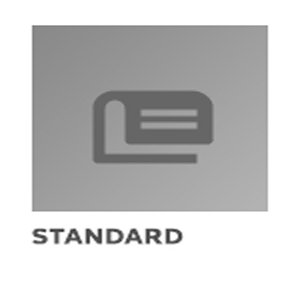Table of Contents
SCOPE
1.MATERIAL
1.1Standard
2.LOADING
2.1Definitions
2.2NomenclatureforSection2Loading
2.3Standard
2.4References
3.STRESSES
3.1Standard
4.MANUFACTUREANDWORKMANSHIP
4.1Standard
5.FACTORYFINISH
5.1Standard
6.PLANS,ASSEMBLYTOLERANCES,ANDMARKING
6.1Standard
7.FOUNDATIONSANDANCHORS
7.1Definitions
7.2Standard
7.3SpecialConditions
7.4FoundationDrawings
8.SAFETYFACTOROFGUYS
8.1Definition
8.2Standard
9.PRESTRESSINGANDPROOFLOADINGOFGUYS
9.1Definitions
9.2Standard
10.INITIALGUYTENSION
10.1Definition
10.2Standard
10.3MethodofMeasurement
11.OPERATIONALREQUIREMENTS
11.1Definitions
11.2Standard
12.PROTECTIVEGROUNDING
12.1Definitions
12.2Standard
13.CLIMBINGANDWORKINGFACILITIES
13.1Definitions
13.2Standard
14.MAINTENANCEANDINSPECTION
14.1Standard
15.ANALYSISOFEXISTINGTOWERSANDSTRUCTURES
15.1Standard
16.COUNTYLISTINGSOFMINIMUMBASICWINDSPEEDS
APPENDICES
A.PurchaserChecklist
B.DesignWindLoadonTypicalMicrowaveAntennas/
Reflectors
C.TableofAllowableTwistandSwayValuesfor
ParabolicAntennas,PassiveReflectors,and
PeriscopeSystemReflectors
D.DeterminationofAllowableBeamTwistandSwayfor
Cross-PolarizationLimitedSystems
E.TowerMaintenanceandInspectionProcedures
F.CriteriafortheAnalysisofExistingStructures
G.SIConversionFactors
H.CommentaryOnIceDesignCriteriaforCommunication
Structures
I.GeotechnicalInvestigationsforTowers Abstract
Provides minimum criteria for specifying and designing steel antenna towers and antenna structures. This information Should not be relied upon for any specific application without competent professional examination and verification of its accuracy, suitability and applicability by a licensed professional engineer. They utilize wind loading criteria based on an annual probability and apply to steel antenna tower and antenna supporting structures for all classes of communications service, such as AM, CATV, FM, Microwave, Cellular, TV, VHF, etc.

